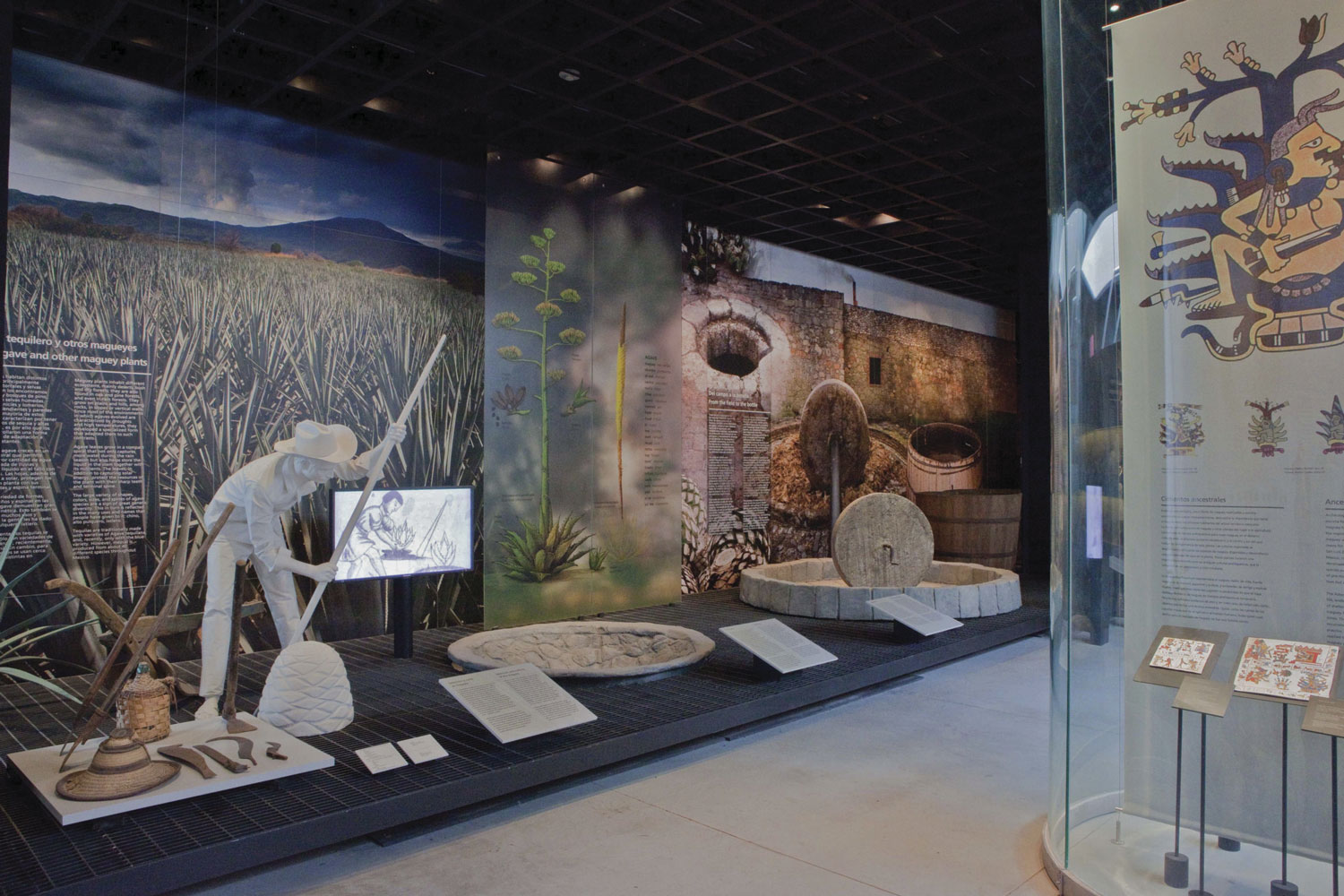Authority for Public Space of Mexico City | Garibaldi Plaza, Historical Center, Mexico City
About the project
The construction of the museum forms a part of the regeneration and remodeling project of the plaza undertaken by the Government of Mexico City. The rectangular building has three stories: the ground floor houses the reception, visitor services and a hall for multiple uses, and the second floor has a restaurant-bar. The area of the first floor was divided lengthwise in two sections, one to form a vestibule for the vertical and horizontal circulations, and the other to house the main exhibition.
The main exhibition presents the great diversity of agave species with which mezcals are made, and the so-called blue agave from which tequila is obtained, as well as the multiple regions in Mexico where they are produced. It shows the production process for tequila and mezcal, their similarities and differences, from cultivation and harvest of agave to comsumption. It narrates the history of these beverages from the veneration of the plant and its uses in pre-hispanic times, to its popularity and commercial popularity in recent times. This popularity is demonstrated in the exhibition of three hundred different tequila and mezcal bottles, which are exchanged and updated periodically, as a display of more than a thousand brands that are currently produced and commercialized.
The exhibition integrates original pieces and three dimensional scenes of the production process, reproductions of codexes and historical documents, as well as graphical, audiovisual and interactive resources. The main exhibit is complemented by a historical-musical review of the mariachi and Garibaldi Plaza, displayed in the lobby. As an aside to the visitor’s experience, the restaurant-bar in the top floor offers, in its open roof terrace, mezcal and tequila tastings.
